Random Idea: IF The Dreamers Are Still Alive In The Real World, Then You Should SEE Them In Godhome.
Random idea: IF the Dreamers are still alive in the real world, then you should SEE them in Godhome. AND get bonuses for keeping them alive.
Team Cherry could totally pull this off as it's still the Dream Realm AND the Godseekers are calling just about everyone there.
Now, I am not saying that we should get Dreamer Boss fights (though that would be cool even if impossible to pull off if you know the original concept of the Dreamers), but what about finding a secret room and BOOM! The Dreamers are there.
Now, finding the Dreamers would be cool and all, as you get extra dialogue with all three and get to see everyone's character (especially you Lurien). But what if they would give you boosts and insights into the Boss Fights you are about to do?
What if Lurien could analyze the Boss fight weaknesses, specifically the glitches and loopholes in them such as False Knight's/Failed Champion's cheat or White Defender's cheat? What if Monomon ran tests in the background to help you figure out how to get the Lifeblood seeds, not to mention help you get them? What if Herrah would randomly help you in battle? Though I would not be opposed to her taking care of Godseeker for me due to all the times Godseeker calls Little Knight a worm as in the earthworm.
And finally, when you reach the final bosses in Pantheon of Hallownest, the Dreamers actively help you during the final bosses fights, each one taking turns (depending on lore or character) until all three help you take on Absolute Radiance. Say goodby to Fall Damage! Also, the idea of Monomon launching an explosive at the Radiance's face looks so lovely.
And of course, the ending cutscene where all three Dreamers wake up and the Hollow Knight is freed to a world without an Infection...please?????? Canonically, the Godhome ending and cutscene STILL play if the Dreamers are alive, but we don't SEE the Dreamers waking up. So please can we see them? Can we see all the hugs?
Anyway-what do you all think?
Do you think Team Cherry or any community modders could pull this idea off? If so, would you play it?
More Posts from Violetdawn001 and Others
My little siblings decided these these Booflys are cows because they have booo in the name just like cows go mooo. Furthermore, they are so big and peaceful that they don't realize you're there so they run over or into you. Exactly like cows.
Therefore, I am commanded by my little siblings to beat the game so we can save the Booflys cows because the Evil Radiance won't let them eat. How dare she.


BLURB:
Instead of Deepnest, the Knight went up through the City of Tears to escape. What would happen but being found and adopted by none other than the Watcher himself.
Tell me, what happens now? After all, the Knight has a twin in the White Palace down below....
Part 1 / Prologue:
https://www.tumblr.com/violetdawn001/738374720772292608/script-out-of-nowhere-you-came-needing-someone-to?source=share
Part 2 / Chapter 1:
https://www.tumblr.com/violetdawn001/739098346305781760/perfectly-not-fine-chapter-one?source=share
Part 3 / Chapter 2:
https://www.tumblr.com/violetdawn001/741443039477858304/perfectly-not-fine-chapter-2?source=share
Part 4 / Chapter 3:
https://www.tumblr.com/violetdawn001/743988423774371840/perfectly-not-fine-chapter-3?source=share
Sometimes...a little Humble Pie like this allows one to create the most beautiful masterpieces.
Now excuse me while I go create. Don't you have something to create too...Artist? Writer? Go while you still have time. I hope to see you again with flushed cheeks and starry eyes as you show me your latest creation.
being an artist is humiliating
I don't think this is talked about enough.
When you put something out in the world, you have to accept the possibility you won't get anything back.
Maybe you laid your heart bare on a one-shot that got zero comments. Maybe it was a painting you spent hours working on that didn't get the engagement you wanted.
I think it might have been the reason I stopped creating, for a little while at least.
I got obsessed with the stupid little numbers and metrics. Got happy when people liked my content, got sad when it resonated with no one. My relationship with what I created was determined by my perception of how many people engaged with it.
I waited day and night for the dopamine rush of notifications. I refresh my inbox, thinking that one of these days, somebody will leave some kind of affirmation, and somehow that recognition will imbue what I created with more significance. More value, writ-large.
If it got crickets, then I've failed somehow. It just wasn't good enough, I say to myself.
For the longest time, I felt like everything I created had to prove it belonged. It all felt like a race, except I didn’t know who I was competing against, only that I always felt left behind and couldn't keep up.
That's my fault. I can't help but measure myself.
But isn’t that the universal tendency? To view our past achievements as a benchmark we have to constantly overcome? Isn’t that why we’re so satisfied to look at old works we made and see how far we’ve come?
I remember what my old teacher used to say. “You’re only as good as your last piece.” As if art exists only to constantly prove itself. As if art is forever doomed to fight for its place in this world.
Well, I'm sick of it.
And so I'm realizing, in real-time, that I don’t want to fight for my place anymore. I don’t want to pander to some stupid algorithm.
I want to create.
I want to believe that a work of art is good simply because it exists out of necessity. Out of someone’s urgent desire to share a piece of their heart in the world because it would have been devastating to keep to themselves. That’s always been very beautiful to me. It's why there is so much heart in fanworks because of the sheer heart poured into it—a love that is as raw as an exposed nerve.
There are so many stories in your head, numerous in number and nebulous in form, that eventually come to fruition as these delicate, precious things you’ve been brave enough to summon into existence. To materialize in a timeline or dashboard. To somehow take up space in people’s minds if only briefly.
Maybe that in itself is the miracle. That what you conjured in your head somehow made its way into something real. Whether in tiny strokes or tiny letters on a tiny screen.
Somehow, the numbers next to them don’t seem to matter as much.
I've been using Tumblr for a while now and I STILL wonder why people rarely comment on posts.
These Eeveeulations are so cute!!!!


Excuse me while I reblog this for future reference...
Words for Skin Tone | How to Describe Skin Color
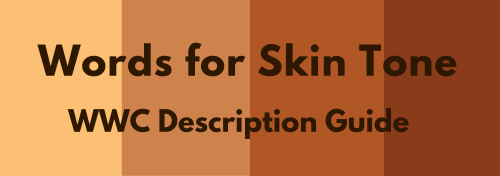
We discussed the issues describing People of Color by means of food in Part I of this guide, which brought rise to even more questions, mostly along the lines of “So, if food’s not an option, what can I use?” Well, I was just getting to that!
This final portion focuses on describing skin tone, with photo and passage examples provided throughout. I hope to cover everything from the use of straight-forward description to the more creatively-inclined, keeping in mind the questions we’ve received on this topic.
Standard Description
Basic Colors

Pictured above: Black, Brown, Beige, White, Pink.
“She had brown skin.”
This is a perfectly fine description that, while not providing the most detail, works well and will never become cliché.
Describing characters’ skin as simply brown or beige works on its own, though it’s not particularly telling just from the range in brown alone.
Complex Colors
These are more rarely used words that actually “mean” their color. Some of these have multiple meanings, so you’ll want to look into those to determine what other associations a word might have.

Pictured above: Umber, Sepia, Ochre, Russet, Terra-cotta, Gold, Tawny, Taupe, Khaki, Fawn.
Complex colors work well alone, though often pair well with a basic color in regards to narrowing down shade/tone.
For example: Golden brown, russet brown, tawny beige…
As some of these are on the “rare” side, sliding in a definition of the word within the sentence itself may help readers who are unfamiliar with the term visualize the color without seeking a dictionary.
“He was tall and slim, his skin a russet, reddish-brown.”
Comparisons to familiar colors or visuals are also helpful:
“His skin was an ochre color, much like the mellow-brown light that bathed the forest.”
Modifiers
Modifiers, often adjectives, make partial changes to a word.The following words are descriptors in reference to skin tone.
Dark - Deep - Rich - Cool
Warm - Medium - Tan
Fair - Light - Pale
Rich Black, Dark brown, Warm beige, Pale pink…
If you’re looking to get more specific than “brown,” modifiers narrow down shade further.
Keep in mind that these modifiers are not exactly colors.
As an already brown-skinned person, I get tan from a lot of sun and resultingly become a darker, deeper brown. I turn a pale, more yellow-brown in the winter.
While best used in combination with a color, I suppose words like “tan” “fair” and “light” do work alone; just note that tan is less likely to be taken for “naturally tan” and much more likely a tanned White person.
Calling someone “dark” as description on its own is offensive to some and also ambiguous. (See: Describing Skin as Dark)
Undertones
Undertones are the colors beneath the skin, seeing as skin isn’t just one even color but has more subdued tones within the dominating palette.
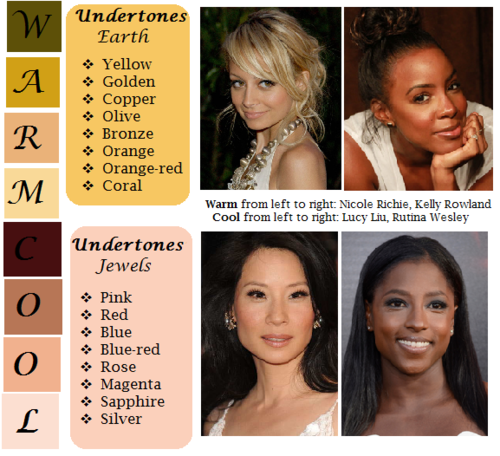
pictured above: warm / earth undertones: yellow, golden, copper, olive, bronze, orange, orange-red, coral | cool / jewel undertones: pink, red, blue, blue-red, rose, magenta, sapphire, silver.
Mentioning the undertones within a character’s skin is an even more precise way to denote skin tone.
As shown, there’s a difference between say, brown skin with warm orange-red undertones (Kelly Rowland) and brown skin with cool, jewel undertones (Rutina Wesley).
“A dazzling smile revealed the bronze glow at her cheeks.”
“He always looked as if he’d ran a mile, a constant tinge of pink under his tawny skin.”
Standard Description Passage
“Farah’s skin, always fawn, had burned and freckled under the summer’s sun. Even at the cusp of autumn, an uneven tan clung to her skin like burrs. So unlike the smooth, red-brown ochre of her mother, which the sun had richened to a blessing.”
-From my story “Where Summer Ends” featured in Strange Little Girls
Here the state of skin also gives insight on character.
Note my use of “fawn” in regards to multiple meaning and association. While fawn is a color, it’s also a small, timid deer, which describes this very traumatized character of mine perfectly.
Though I use standard descriptions of skin tone more in my writing, at the same time I’m no stranger to creative descriptions, and do enjoy the occasional artsy detail of a character.
Creative Description
Whether compared to night-cast rivers or day’s first light…I actually enjoy seeing Characters of Colors dressed in artful detail.
I’ve read loads of descriptions in my day of white characters and their “smooth rose-tinged ivory skin”, while the PoC, if there, are reduced to something from a candy bowl or a Starbucks drink, so to actually read of PoC described in lavish detail can be somewhat of a treat.
Still, be mindful when you get creative with your character descriptions. Too many frills can become purple-prose-like, so do what feels right for your writing when and where. Not every character or scene warrants a creative description, either. Especially if they’re not even a secondary character.
Using a combination of color descriptions from standard to creative is probably a better method than straight creative. But again, do what’s good for your tale.
Natural Settings - Sky

Pictured above: Harvest Moon -Twilight, Fall/Autumn Leaves, Clay, Desert/Sahara, Sunlight - Sunrise - Sunset - Afterglow - Dawn- Day- Daybreak, Field - Prairie - Wheat, Mountain/Cliff, Beach/Sand/Straw/Hay.
Now before you run off to compare your heroine’s skin to the harvest moon or a cliff side, think about the associations to your words.
When I think cliff, I think of jagged, perilous, rough. I hear sand and picture grainy, yet smooth. Calm. mellow.
So consider your character and what you see fit to compare them to.
Also consider whose perspective you’re describing them from. Someone describing a person they revere or admire may have a more pleasant, loftier description than someone who can’t stand the person.
“Her face was like the fire-gold glow of dawn, lifting my gaze, drawing me in.”
“She had a sandy complexion, smooth and tawny.”
Even creative descriptions tend to draw help from your standard words.
Flowers
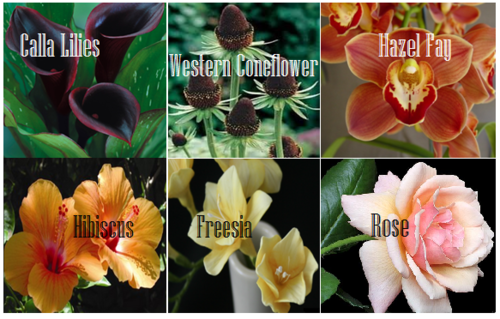
Pictured above: Calla lilies, Western Coneflower, Hazel Fay, Hibiscus, Freesia, Rose
It was a bit difficult to find flowers to my liking that didn’t have a 20 character name or wasn’t called something like “chocolate silk” so these are the finalists.
You’ll definitely want to avoid purple-prose here.
Also be aware of flowers that most might’ve never heard of. Roses are easy, as most know the look and coloring(s) of this plant. But Western coneflowers? Calla lilies? Maybe not so much.
“He entered the cottage in a huff, cheeks a blushing brown like the flowers Nana planted right under my window. Hazel Fay she called them, was it?”
Assorted Plants & Nature

Pictured above: Cattails, Seashell, Driftwood, Pinecone, Acorn, Amber
These ones are kinda odd. Perhaps because I’ve never seen these in comparison to skin tone, With the exception of amber.
At least they’re common enough that most may have an idea what you’re talking about at the mention of “pinecone.“
I suggest reading out your sentences aloud to get a better feel of how it’ll sounds.
"Auburn hair swept past pointed ears, set around a face like an acorn both in shape and shade.”
I pictured some tree-dwelling being or person from a fantasy world in this example, which makes the comparison more appropriate.
I don’t suggest using a comparison just “cuz you can” but actually being thoughtful about what you’re comparing your character to and how it applies to your character and/or setting.
Wood

Pictured above: Mahogany, Walnut, Chestnut, Golden Oak, Ash
Wood can be an iffy description for skin tone. Not only due to several of them having “foody” terminology within their names, but again, associations.
Some people would prefer not to compare/be compared to wood at all, so get opinions, try it aloud, and make sure it’s appropriate to the character if you do use it.
“The old warlock’s skin was a deep shade of mahogany, his stare serious and firm as it held mine.”
Metals

Pictured above: Platinum, Copper, Brass, Gold, Bronze
Copper skin, brass-colored skin, golden skin…
I’ve even heard variations of these used before by comparison to an object of the same properties/coloring, such as penny for copper.
These also work well with modifiers.
“The dress of fine white silks popped against the deep bronze of her skin.”
Gemstones - Minerals
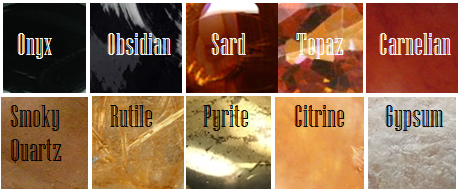
Pictured above: Onyx, Obsidian, Sard, Topaz, Carnelian, Smoky Quartz, Rutile, Pyrite, Citrine, Gypsum
These are trickier to use. As with some complex colors, the writer will have to get us to understand what most of these look like.
If you use these, or any more rare description, consider if it actually “fits” the book or scene.
Even if you’re able to get us to picture what “rutile” looks like, why are you using this description as opposed to something else? Have that answer for yourself.
“His skin reminded her of the topaz ring her father wore at his finger, a gleaming stone of brown, mellow facades.”
Physical Description
Physical character description can be more than skin tone.
Show us hair, eyes, noses, mouth, hands…body posture, body shape, skin texture… though not necessarily all of those nor at once.
Describing features also helps indicate race, especially if your character has some traits common within the race they are, such as afro hair to a Black character.
How comprehensive you decide to get is up to you. I wouldn’t overdo it and get specific to every mole and birthmark. Noting defining characteristics is good, though, like slightly spaced front teeth, curls that stay flopping in their face, hands freckled with sunspots…
General Tips
Indicate Race Early: I suggest indicators of race be made at the earliest convenience within the writing, with more hints threaded throughout here and there.
Get Creative On Your Own: Obviously, I couldn’t cover every proper color or comparison in which has been “approved” to use for your characters’ skin color, so it’s up to you to use discretion when seeking other ways and shades to describe skin tone.
Skin Color May Not Be Enough: Describing skin tone isn’t always enough to indicate someone’s ethnicity. As timeless cases with readers equating brown to “dark white” or something, more indicators of race may be needed.
Describe White characters and PoC Alike: You should describe the race and/or skin tone of your white characters just as you do your Characters of Color. If you don’t, you risk implying that White is the default human being and PoC are the “Other”).
PSA: Don’t use “Colored.” Based on some asks we’ve received using this word, I’d like to say that unless you or your character is a racist grandmama from the 1960s, do not call People of Color “colored” please.
Not Sure Where to Start? You really can’t go wrong using basic colors for your skin descriptions. It’s actually what many people prefer and works best for most writing. Personally, I tend to describe my characters using a combo of basic colors + modifiers, with mentions of undertones at times. I do like to veer into more creative descriptions on occasion.
Want some alternatives to “skin” or “skin color”? Try: Appearance, blend, blush, cast, coloring, complexion, flush, glow, hue, overtone, palette, pigmentation, rinse, shade, sheen, spectrum, tinge, tint, tone, undertone, value, wash.
Skin Tone Resources
List of Color Names
The Color Thesaurus
Skin Undertone & Color Matching
Tips and Words on Describing Skin
Photos: Undertones Described (Modifiers included)
Online Thesaurus (try colors, such as “red” & “brown”)
Don’t Call me Pastries: Creative Skin Tones w/ pics I
Writing & Description Guides
WWC Featured Description Posts
WWC Guide: Words to Describe Hair
Writing with Color: Description & Skin Color Tags
7 Offensive Mistakes Well-intentioned Writers Make
I tried to be as comprehensive as possible with this guide, but if you have a question regarding describing skin color that hasn’t been answered within part I or II of this guide, or have more questions after reading this post, feel free to ask!
~ Mod Colette
This is so cool!


Pokemon | Dreaming of good times | Rayquaza and Entei
My goodness, I never thought of the parallels...
Also, lovely poem.

Two kindly bugs
Lie resting in grottos of their own
Their blessings, an aid
They ease passage
To the hiding place
Of Great Beings
And their boons
I want everyone to know that this is me every time someone drops a comment on something I've written:
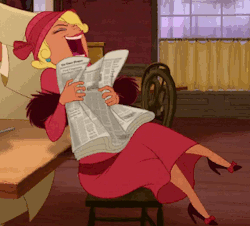
This is now my head canon and you can't stop me.

My sisters and I call this the princess tram because it takes passengers to Deepnest- Basin- Hive, all the places Hornet would have been raised. We headcanon the king had it constructed specifically for her transportation.
-
 catvulture liked this · 2 months ago
catvulture liked this · 2 months ago -
 crazydoughnutlady liked this · 2 months ago
crazydoughnutlady liked this · 2 months ago -
 latssss liked this · 4 months ago
latssss liked this · 4 months ago -
 silversteelheartsposts liked this · 5 months ago
silversteelheartsposts liked this · 5 months ago -
 adorables-alla-mozzarella liked this · 6 months ago
adorables-alla-mozzarella liked this · 6 months ago -
 confusionwtf liked this · 7 months ago
confusionwtf liked this · 7 months ago -
 inkwithblots liked this · 9 months ago
inkwithblots liked this · 9 months ago -
 lunayuemoon liked this · 10 months ago
lunayuemoon liked this · 10 months ago -
 lbcrow reblogged this · 11 months ago
lbcrow reblogged this · 11 months ago -
 lbcrow liked this · 11 months ago
lbcrow liked this · 11 months ago -
 avis-mortua liked this · 1 year ago
avis-mortua liked this · 1 year ago -
 eggobuggo liked this · 1 year ago
eggobuggo liked this · 1 year ago -
 mercymain420 liked this · 1 year ago
mercymain420 liked this · 1 year ago -
 starscaper-98 liked this · 1 year ago
starscaper-98 liked this · 1 year ago -
 icaruslamentspiral liked this · 1 year ago
icaruslamentspiral liked this · 1 year ago -
 alurafiremender liked this · 1 year ago
alurafiremender liked this · 1 year ago -
 bespectacled-bookwyrm liked this · 1 year ago
bespectacled-bookwyrm liked this · 1 year ago -
 tarawriter liked this · 1 year ago
tarawriter liked this · 1 year ago -
 violetdawn001 reblogged this · 1 year ago
violetdawn001 reblogged this · 1 year ago -
 spademooncake liked this · 1 year ago
spademooncake liked this · 1 year ago -
 licencedfool liked this · 1 year ago
licencedfool liked this · 1 year ago -
 jastertown liked this · 1 year ago
jastertown liked this · 1 year ago -
 breadmecoshy liked this · 1 year ago
breadmecoshy liked this · 1 year ago -
 lavos-day1999 liked this · 1 year ago
lavos-day1999 liked this · 1 year ago -
 ronin-of-valenwood liked this · 1 year ago
ronin-of-valenwood liked this · 1 year ago -
 shalotheaxolotltheadventurer liked this · 1 year ago
shalotheaxolotltheadventurer liked this · 1 year ago -
 aretherenofreeusernames reblogged this · 1 year ago
aretherenofreeusernames reblogged this · 1 year ago -
 ionicslime liked this · 1 year ago
ionicslime liked this · 1 year ago -
 shenny100 liked this · 1 year ago
shenny100 liked this · 1 year ago -
 kimenochan liked this · 1 year ago
kimenochan liked this · 1 year ago -
 gncbozo liked this · 1 year ago
gncbozo liked this · 1 year ago -
 maze-of-my-design liked this · 1 year ago
maze-of-my-design liked this · 1 year ago -
 brownjohnch liked this · 1 year ago
brownjohnch liked this · 1 year ago -
 nonapplicablename liked this · 1 year ago
nonapplicablename liked this · 1 year ago -
 flordosmuros liked this · 1 year ago
flordosmuros liked this · 1 year ago -
 coolkhgirl liked this · 1 year ago
coolkhgirl liked this · 1 year ago -
 dissonantharmony liked this · 1 year ago
dissonantharmony liked this · 1 year ago -
 vulturereyy liked this · 1 year ago
vulturereyy liked this · 1 year ago -
 monomonomon liked this · 1 year ago
monomonomon liked this · 1 year ago -
 forgottenteacup reblogged this · 1 year ago
forgottenteacup reblogged this · 1 year ago -
 forgottenteacup liked this · 1 year ago
forgottenteacup liked this · 1 year ago -
 violetdawn001 reblogged this · 1 year ago
violetdawn001 reblogged this · 1 year ago -
 whitebookposts liked this · 1 year ago
whitebookposts liked this · 1 year ago -
 vrtlkm reblogged this · 1 year ago
vrtlkm reblogged this · 1 year ago -
 vrtlkm reblogged this · 1 year ago
vrtlkm reblogged this · 1 year ago
